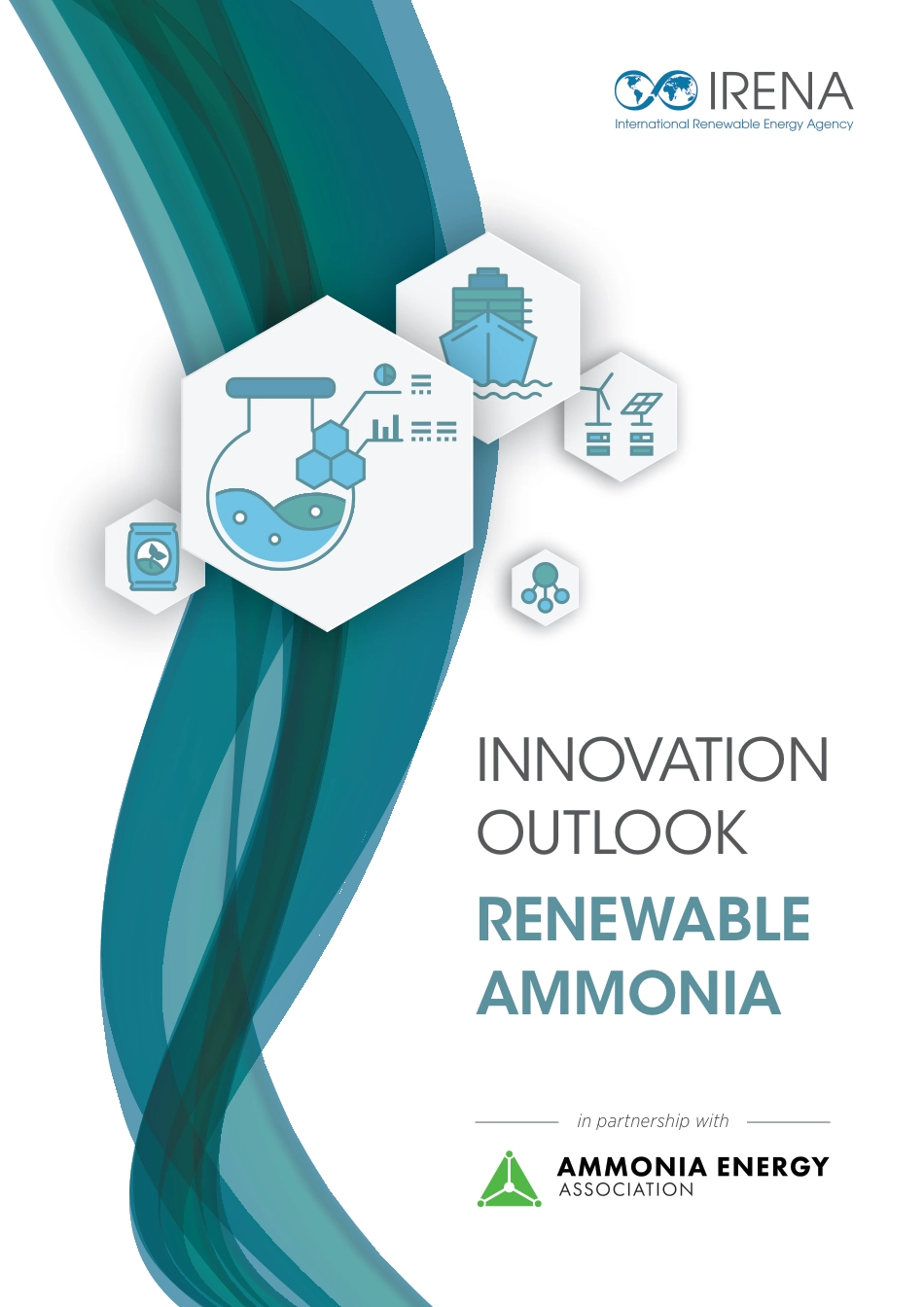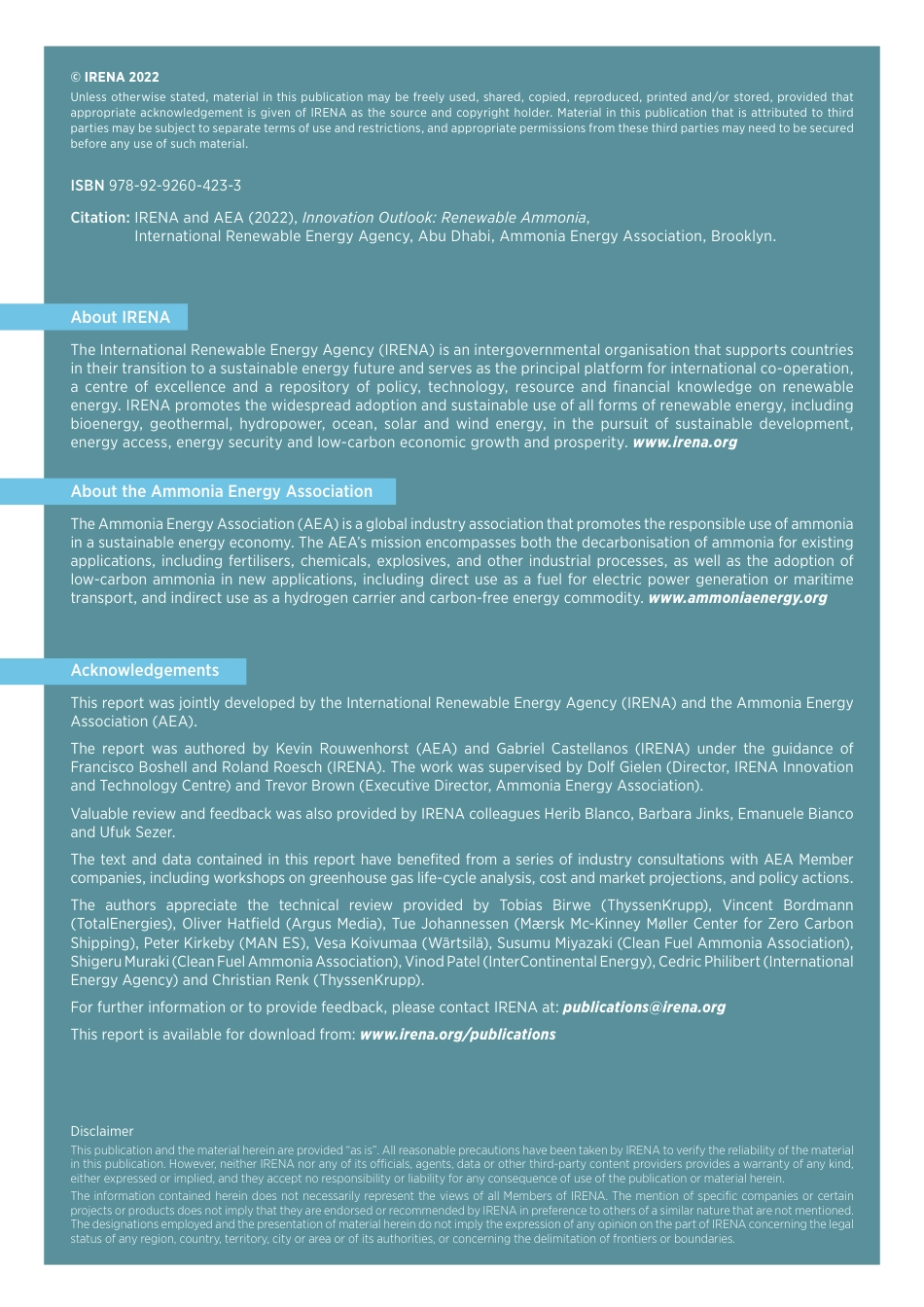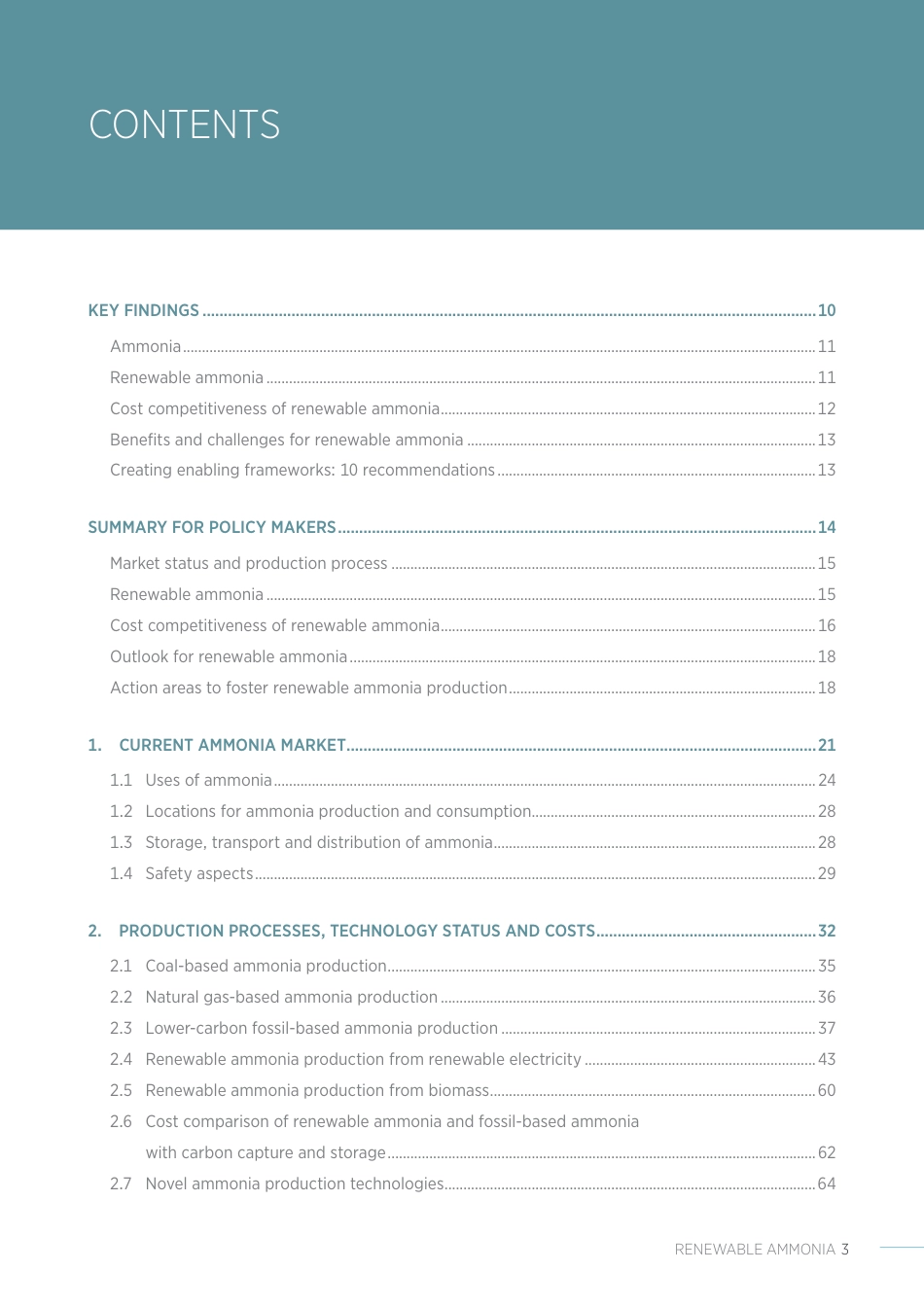INNOVATION OUTLOOKRENEWABLE AMMONIA in partnership with© IRENA 2022Unless otherwise stated, material in this publication may be freely used, shared, copied, reproduced, printed and/or stored, provided that appropriate acknowledgement is given of IRENA as the source and copyright holder. Material in this publication that is attributed to third parties may be subject to separate terms of use and restrictions, and appropriate permissions from these third parties may need to be secured before any use of such material.ISBN 978-92-9260-423-3Citation: IRENA and AEA (2022), Innovation Outlook: Renewable Ammonia, International Renewable Energy Agency, Abu Dhabi, Ammonia Energy Association, Brooklyn.About IRENAThe International Renewable Energy Agency (IRENA) is an intergovernmental organisation that supports countries in their transition to a sustainable energy future and serves as the principal platform for international co-operation, a centre of excellence and a repository of policy, technology, resource and financial knowledge on renewable energy. IRENA promotes the widespread adoption and sustainable use of all forms of renewable energy, including bioenergy, geothermal, hydropower, ocean, solar and wind energy, in the pursuit of sustainable development, energy access, energy security and low-carbon economic growth and prosperity. www.irena.orgAbout the Ammonia Energy AssociationThe Ammonia Energy Association (AEA) is a global industry association that promotes the responsible use of ammonia in a sustainable energy economy. The AEA’s mission encompasses both the decarbonisation of ammonia for existing applications, including fertilisers, chemicals, explosives, and other industrial processes, as well as the adoption of low-carbon ammonia...



